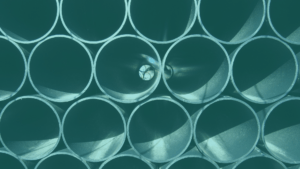The Opportunity
Our client, a Latin American steel production company, owns a lime plant that consists of two calcination lines, a transportation system and two mills for the production of fine lime. With these facilities, a total of 1,500 tons of lime are processed daily, mostly for the steel area.
Due to the facilities of the plant control system dated to the 70s, when the plant was built, the technologies used were analog controllers and relay logic, in consequence the maintenance, control and monitoring of failures was extremely difficult. The serious conditions of the facilities compromised the production, not allowing it to exceed a yield greater than 70% of its full capacity.
The Solution
The Solution The integral replacement of the old controlling system was made by an architecture of Programmable Logic Controllers (PLC). The architecture of the system is supported by six PLCs, where each one manages a sector of the plant. A second phase of the project contemplated the conditioning of the drivers, to which the communication stage was modified and additional functionality was added, facilitating the management of the same from the installed controllers.
At the level of control and communication networks, the option was to implement a redundant communication, Modbus-TCP and Modbus-Plus. The communication of each controller with the SCADA System is also done via Modbus-TCP.
The provision? of the project, reached the provision of specialized labor for the installation and configuration of all the instrumentation, due to the old Endress & Hauser equipment instrumentation, was replaced in an integral way with HART communications. The total of analog signals around the plant is 350. In total the Control System commands about two thousand five hundred (2500) inputs/outputs.
The controlling system included the provision and commissioning of twelve (12), columns of boards of 2000 x 800 x 600 mm.
The Results
The project was delivered on time, which led to an explicit congratulation from the client for the integral management of the project and the fulfillment of delivery times. Thanks to this, it was possible to obtain record time values in the production indicators for which the plant was designed. They could be registered after twenty (20) hours of the start of the new Controlling System.



